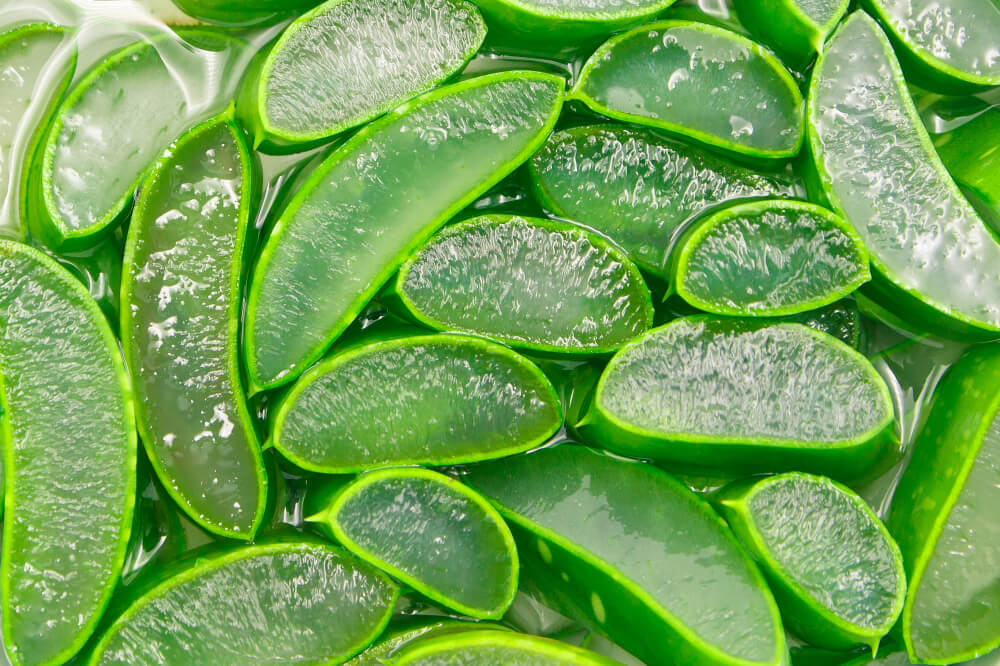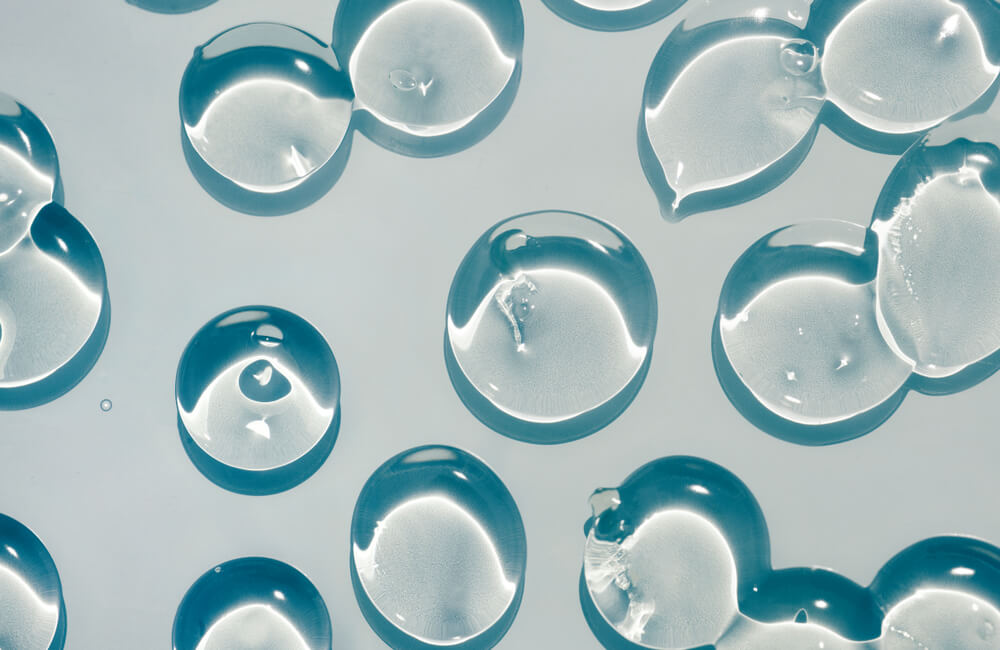Die Aloe Vera ist schon seit vielen Jahren als Heilpflanze bekannt und wird heute in vielen Bereichen eingesetzt. Vor allem die feuchtigkeitsspendende Wirkung für die Haut sowie die Haare macht sie besonders beliebt. Doch welche Verwendungsmöglichkeiten gibt es und wie wird die Aloe Vera angewandt?
Die Wüstenpflanze bietet Ihrem Körper zahlreiche Vorteile und Anwendungsmöglichkeiten und ist mittlerweile auch in zahlreichen Beautyprodukten, Lotionen und Cremes sowie Masken enthalten. Dabei profitiert die Haut vorwiegend von den vielen Vitaminen und Vitalstoffen sowie vielen andren Inhaltsstoffen dieser besonderen Heilpflanze. Zusätzlich wird der Aloe Vera nachgesagt, dass sie bei Sonnenbränden und anderen Verbrennungen hilft, eine kühlende Eigenschaft mitbringt und die Haut mit der nötigen Feuchtigkeit versorgt
Ursprung und Heilkraft der Aloe Vera
Aloe Vera wächst vorwiegend in den meisten tropischen und subtropischen Regionen der Erde. Die Pflanze kommt mit sehr wenig Wasser zurecht und wird bereits seit Jahrtausenden in zahlreichen Kulturen als Heilpflanze eingesetzt. Die Wüstenpflanze wird auch gerne als „Quell der ewigen Jugend“ bezeichnet und verfügt über mehr als 160 Vitalstoffe, dessen perfektes Zusammenspiel nicht nur für die Gesundheit, sondern auch die Schönheit Vorteile zu bieten hat.
Den enthaltenen Fett- und Aminosäuren sowie Anthrachinone, Mineralstoffe, Vitamine und Enzym wird eine heilende Kraft nachgesagt und vor allem der Wirkstoff Acemannan gilt als sehr wirkungsvoll und heilend. Das Polysaccharid bildet dabei die Basis für alle verbindungsschaffenden Zellen, worunter auch die Haut zählt. Ebenso gehören die Gefäßwände, die Gelenke, der Knorpel sowie Bänder und Sehnen dazu. Außerdem bildet es das Grundgerüst für unsere Knochen.
In manchen Kulturen bezeichnen die Einheimischen die Aloe Vera Pflanze auch als „Pflanze der Unsterblichkeit“, sodass es kein Wunder ist, dass sie ein fester Bestandteil vieler Heilungsanwendungen ist.
Ihr werden folgende Wirkungen nachgesagt:
- Schmerzlindernd
- Hilft bei Immunschwäche
- Kräftigend
- Regenerierend
- Unterstützt die Leber, die Niere sowie auch das Verdauungssystem
- Hilft bei Entzündungen oder Pilzen
- Feuchtigkeitsspendend
Aloe Vera - Wirkung für Deine Haut
Viele Menschen nutzen Aloe Vera vorwiegend dazu, um die Haut zu verwöhnen. Dabei kann Aloe Vera zum Beispiel als feuchtigkeitsspendende Gesichtscreme eingesetzt werden. Hier macht das Gel bzw. der Saft der Pflanze die Haut schön geschmeidig und fördert nicht nur die Durchblutung, sondern ebenso die Produktion von den Kollagenen und elastischen Fasern unseres Bindegewebes.
Zudem gilt Aloe Vera als ein natürliches Anti Aging Mittel. Kein Wunder, denn die Wirkstoffe verzögern die Faltenbildung und lassen damit die Haut länger jünger aussehen.
Des Weiteren kann Aloe Vera neben der Hautpflege auch beim Kampf gegen verschiedene Hautprobleme als Helfer zur Seite stehen. So kann die Pflanze zum Beispiel bei Verbrennungen, wie Sonnenbrand eingesetzt werden. Doch auch Verbrühungen oder allergischen Reaktionen sowie Geschwüren wird von Deiner Haut eine Regeneration und Hilfe gefordert.
Dank der antiseptischen und entzündungshemmenden Eigenschaft wird Aloe Vera auch beim Kampf gegen Pickel oder Abszesse sowie auch Herpes eingesetzt. Selbst viele Menschen, die an Schuppenflechte oder Neurodermitis leiden, setzen nicht selten ihre Hoffnung auf die heilende Wirkung des Alleskönners.

Wie kann man Aloe Vera für die Haut einsetzen?
Aloe Vera gibt es in vielen unterschiedlichen Formen. So lässt es sich ganz nach Bedarf einsetzen. Im Folgenden finden Sie Tipps und Tricks zu unterschiedlichen Möglichkeiten:
Aloe Vera als Serum
Wenn Sie Aloe Vera als Serum nutzen möchten, können sie sich ein hochwertiges Serum kaufen oder mit einem Mixer selbst herstellen. Anschließend wird das Serum im Gesicht oder anderen Partien des Körpers aufgetragen. Vor allem bei sehr trockener Haut hilft das Aloe Vera Serum dabei, der Haut die benötigte Pflege zu geben.
Aloe Vera als erfrischendes Spray
Aloe Vera bringt eine enorm erfrischende Wirkung mit sich, die primär im Sommer heiß geliebt wird. Hierzu kannst Du das Aloe Vera Gel mit Wasser in einer normalen Sprühflasche vermischen. Das erfrischende Spray können Sie nun im Sommer und an heißen Tagen ganz nach Bedarf auf den Körper oder das Gesicht aufsprühen.
Aloe Vera als Gesichts-Peeling
Um eine Peeling Masse zu erreichen, kannst Du Aloe Vera Gel mit ein wenig Kurkumapulver, Jojobaöl sowie Kichererbsenmehl in einem Mixer vermengen. Achten Sie darauf, dass die Zutaten zu einer ebenmäßigen Masse werden. Anschließend wird alles in kreisenden Bewegungen auf das Gesicht aufgetragen. Im Anschluss darf die Masse einige Minuten einwirken, bevor sie wieder mit einem Handtuch abgenommen wird. Die Reste dürfen im Gesicht bleiben und werden nicht abgewaschen. Das Mehl bringt ein schonendes Peeling mit, während Kurkuma gegen Unreinheiten der Haut wirken. Das Aloe Vera Gel sowie das Jojobaöl verwöhnen die Haut und spenden ihr Feuchtigkeit.
Aloe Vera als reichhaltige Vitamin-Pads
Bei den Vitamin Pads wird ein großes Blatt der Heilpflanze abgetrennt und im Anschluss von den Dornen befreit. Im Anschluss wird das Blatt in ca. vier cm breite Stücke geschnitten. Danach sollten Sie beim horizontalen Zerteilen der Stücke darauf achten, dass diese nicht kaputtgehen. Das Aloe Vera Gel wird nun vorsichtig mit einem Messer aus den Blättern gekratzt und kann für eine spätere Anwendung zur Seite gepackt werden.
Die Innenseiten der Blätter sind jetzt feucht und können in einem luftdichten Behälter im Kühlschrank aufgehoben werden. Damit lassen sich die Blätter bei Bedarf zur Behandlung von Sonnenbrand, Wunden, Narben, von Mückenstichen oder aber bei trockener Haut einsetzen. Auch als kühlende Erfrischung eignen sie sich hervorragend.
Aloe Vera als Gesichtsmaske bei unreiner Haut
Endlich gehören Picke und Co. der Vergangenheit an. Eine Maske aus Honig, Zitronensaft und Aloe Vera hilft dabei, Pickel dauerhaft zu bekämpfen, ohne dabei die Haut anzugreifen. Die fertige Mischung wird mithilfe von einem Pinsel auf dem Gesicht aufgetragen, wo sie jetzt 15 Minuten einwirken darf. Anschließend werden die Reste mit warmem Wasser gründlich abgewaschen.
Aloe Vera als natürliches Rasiergel
Das frische Aloe Vera Gel lässt sich auch als ein natürliches und damit hervorragend verträgliches Rasiergel verwenden. Damit können Sie auf teuren Rasierschaum mit chemischen Zusätzen verzichten. Dazu wird das Gel einfach wie gewohnt aufgetragen. Durch das Aloe Vera wird der Haut Feuchtigkeit gespendet, wodurch Hautrötungen oder Rasierpickel verhindert werden können.
Aloe Vera als Körper- oder Handcreme
Wenn Sie besonders weiche und geschmeidige Haut haben möchten, eignet sich eine Creme aus Aloe Vera und Kokosöl zur intensiven Hautpflege. Mischen Sie dafür beides im Verhältnis von zwei Drittel zu einem Drittel. Ein Handrührer eignet sich ideal zum Vermengen. Die cremige und angenehme Masse wirkt besonders gut bei trockenen oder rissigen Händen.
Aloe Vera als Wimpern und Augenbrauengel
Um ein Wimpern und Augenbrauengel aus Aloe Vera herzustellen, wird das Gel mit ein paar Tropfen Rizinusöl vermengt und sollte Platz in einem kleinen Behälter finden. Auftragen lässt sich die Mischung am besten mit einer alten und gründlich ausgewaschenen Mascara-Bürste, wobei das Gel über Nacht einwirken sollte. Damit Sie eventuell widerspenstige Augenbrauen in Griff bekommen und sie den ganzen Tag in Form bleiben, wird das pure Gel in Wuchsrichtung aufgetragen.

Aloe Vera für die Haare
Nicht nur die Haut profitiert von den vielen Vorteilen der Aloe Vera Heilpflanze. Auch die Haare können vielseitig gepflegt werden. Ob lockige Haare, festes Haar oder trockene Spitzen, Haare profitieren ebenso von den Inhaltsstoffen der Aloe Vera Pflanze.
Aloe Vera als Haarspülung
Um Ihren Haaren die Extraportion Feuchtigkeit zu verpassen, wird das Aloe Vera Gel in das komplette Haar und die Kopfhaut einmassiert. Das Gel sollte jetzt mindestens 15 Minuten einwirken und wird im Anschluss wie gewohnt ausgewaschen.
Aloe Vera als Leave-in-Conditioner
Sie möchten Ihre Haare besonders verwöhnen? Dann mischen Sie das Aloe Vera Gel mit einigen Tropfen Jojobaöl. Nutzen Sie einen Mixer, um alles zu einer homogenen Masse zu verrühren. Diese kann nun in die Spitzen, den Haaransatz sowie auch in die volle Haarlänge gestrichen und in Wuchsrichtung einmassiert werden. Das pflegt die Haare nicht nur, sondern sorgt auch für mehr Fülle. Diese Masse bleibt nun dauerhaft in den Haaren.
Aloe Vera für das Immunsystem nutzen
Aloe Vera kann nicht nur äußerlich angewendet werden, sondern sorgt auch von innen heraus für viele Vorteile für den Körper. So enthält diese Pflanze viele verschiedene Vitamine und Mineralstoffe, welche für die Darmflora sowie auch das Immunsystem sehr wertvoll sind. Aber achte unbedingt auf eine reine Bio-Qualität, denn nur so kann gewährleistet werden, dass keinerlei schädliche Zusatzstoffe in den Körper gelangen. Wer den Saft nicht selbst machen möchte, kann diesen auch in speziellen Reformhäusern kaufen.
Fazit – Aloe Vera für unseren Körper
Aloe Vera ist gesund, gehaltvoll, immunstärkend und besonders vielseitig einsetzbar. Nicht nur die Haut wird wunderbar geschmeidig und profitiert von der Extraportion Vitamine und Feuchtigkeit. Auch die Haare lassen sich mit Aloe Vera auf unterschiedliche Art pflegen. Wer Aloe Vera Pflanzen zu Hause hat, der kann sich kinderleicht zahlreiche Produkte selbst herstellen und diese mit anderen hochwertigen Ölen und anderen Inhaltsstoffen vermengen.


